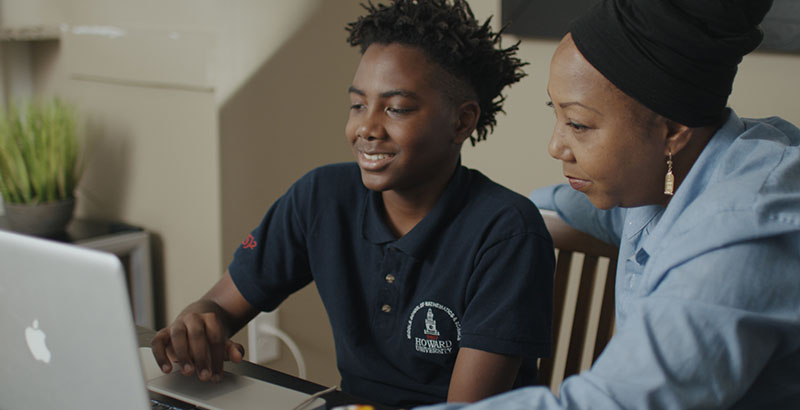A Principal’s View: My District Middle School Wasn’t Expecting a Pandemic, but We Were Prepared. How We’re Keeping Students Educated & Engaged

When the COVID-19 pandemic hit, all District of Columbia Public Schools had to make a very quick shift to distance learning. Schools scrambled to create lessons that would work online, provide devices for children to take home and ensure that families had access to the internet.
At Howard University Middle School, we were prepared. All 294 of our children had devices at home — even though the majority of them come from low-income families — thanks to our “2-to-1” technology program, in which we provide students with one device to use at school and one to use at home.
Access to technology is essential, but it’s just one of the ingredients that make remote learning work.
Over the past few years, we have shifted our teaching model to ensure that we’re equipping students with the kind of habits they’ll need to be successful long after they finish school — like knowing how to manage their time, set goals, reflect on their progress and reach out for help. We joined the Summit Learning Program and rolled out 1:1 mentoring for every student in the building. Today, there isn’t a single student who doesn’t have regular check-ins with a designated mentor. During these check-ins, students set short- and long-term goals for themselves, work with their mentors to make a plan on how to achieve them and track their own progress.
In these regular check-ins, students and mentors also build strong, trusting relationships. The mentor becomes an advocate for the student inside and outside the classroom, which is especially important now, as our students deal with additional hardships in their lives during the coronavirus pandemic. Science tells us that when schools are driven by relationships, those relationships can drive learning outside the classroom, and that has proved to be our experience.
Despite the challenges of COVID-19, our students and teachers haven’t missed a beat in making a seamless transition to remote learning. Students are completing assignments and assessments and collaborating with their teachers and one another through teleconferences. On the first school day after school closed, 87 percent of our children accessed the Summit Learning Platform, the tech tool our students use to access curriculum, set goals, get feedback from their teachers and more. That percentage has increased to 92 percent daily.
Counselors call and check up on students who have not been online. Deans remind students about appropriate online behavior and create virtual celebrations for them. One of our special educators calls each of his students every morning to wake them up and makes sure they are ready for class.
Millions of adults all over the world are now working from home for the first time, and while they may have the laptop, the printer and other gadgets, they’re struggling to get work done. They didn’t grow up in a school system that was designed to equip them with the skills and habits associated with lifelong learning. Our students were ready, and this was not a heavy lift for them. So, why aren’t we demanding that schools across the country set students up not just with the technology but also with the know-how to be able to work and learn from anywhere?
Naturally, we miss seeing our students every day, and social distancing is difficult. We are adapting to the new normal. At Howard University Middle School, we are confident that our students are not only learning, they are developing as individuals who can adapt to change and work from anywhere.
Kathryn Procope is head of school at Howard University Middle School in Washington, D.C.
Get stories like these delivered straight to your inbox. Sign up for The 74 Newsletter

;)